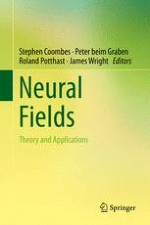2014 | OriginalPaper | Buchkapitel
12. A Neural Approach to Cognition Based on Dynamic Field Theory
verfasst von : Jonas Lins, Gregor Schöner
Erschienen in: Neural Fields
Verlag: Springer Berlin Heidelberg
Aktivieren Sie unsere intelligente Suche, um passende Fachinhalte oder Patente zu finden.
Wählen Sie Textabschnitte aus um mit Künstlicher Intelligenz passenden Patente zu finden. powered by
Markieren Sie Textabschnitte, um KI-gestützt weitere passende Inhalte zu finden. powered by
